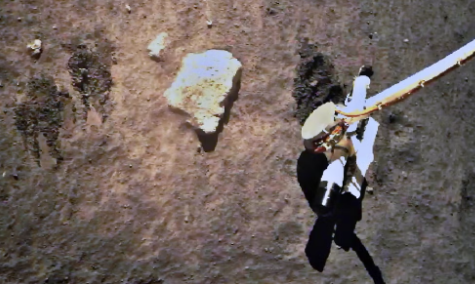Chinese Lunar Probe Finds Water Traces in Moon Soil
China’s Chang’e-5 lunar probe safely returned soil and rock samples from the Moon in 2020. These samples showed small amounts of water. A group of scientists wrote about this important discovery in the peer-reviewed magazine Nature Astronomy.
Historical Background
It’s not a new idea to look for water on the Moon. Using NASA’s Moon Mineralogy Mapper (M3) image spectrometer, India’s Chandrayaan-1 mission was very important in finding water molecules on the moon’s surface. A NASA infrared detector and tests on samples from the 1960s and 1970s were also used to prove the existence of water on the moon in the past.
Scientific Findings
According to new research, the Chang’e-5 samples, which were taken from a higher latitude on the Moon, show that water can exist in the form of hydrated salts even in parts of the Moon that get a lot of sunlight. The Chinese Academy of Sciences reported finding an enhanced hydrated mineral that contains molecular water. This suggests that lunar dirt might be able to hold water.
Research Collaboration
Several places worked together on the study, such as the Beijing National Laboratory for Condensed Matter Physics and the Institute of Physics under China’s Academy of Sciences. It was very important to make sure that the results were not tainted by rocket smoke or pollution from the ground.
Implications for Lunar Exploration
Finding ammonium in the samples gives us clues about how the Moon lost its atmosphere, which suggests a complicated geological past. These results may have big effects on future habitation and study of the Moon because they show that there may be enough water for people to live and work on the Moon for a long time.
About Chang’e-5
China’s effort to return lunar samples, called Chang’e-5, launched in November 2020. It landed safely in the Oceanus Procellarum area of the Moon, brought back 2,000 grams of lunar soil, and will be back on Earth in December 2020. Since 1976, this journey was the first to bring back samples from the moon. Chang’e-5’s aircraft used new technologies, such as navigation systems that could find their own way. The samples are being looked at to learn more about the science of the moon. It showed off China’s progress in space research, making it a major player along with the US and Russia.
Month: Current Affairs - July, 2024
Category: Science & Technology Current Affairs







